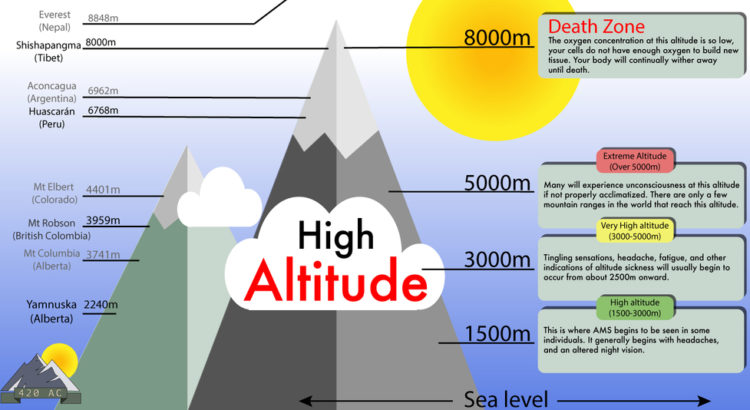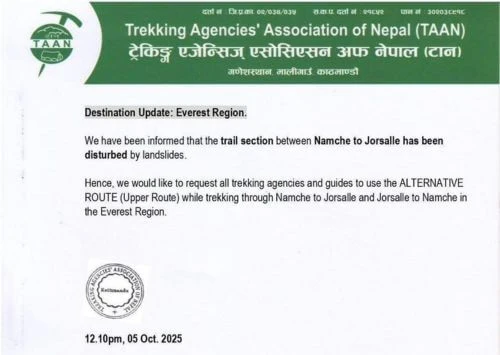Understanding Everest Base Camp Trek.
The Everest Base Camp Trek is a thrilling adventure that attracts thousands of yearly trekkers. Situated in the Khumbu Region of Nepal, the trek is renowned for its breathtaking scenery, picturesque villages, and proximity to the world's highest peak - Mount Everest, 8848.86 meters 29 (031.6929 feet). The trek typically takes around 12-14 days to complete, covering a distance of approximately 130 kilometres. Trekkers navigate through rugged terrains, traverse suspension bridges, and experience various climatic conditions, from lush green forests to barren landscapes.
The journey to Everest Base Camp is not for the faint-hearted. Trekkers must be physically fit, mentally prepared, and equipped with the necessary gear and supplies. It's a challenging endeavour that requires careful planning, adequate acclimatization, and a deep respect for the environment. Now, let's probe into the commonness of altitude sickness in Everest Region Trekking.
Altitude Sickness on Everest Base Camp Trek.
Altitude sickness, also known as Acute Mountain Sickness (AMS), occurs when the body is unable to adjust to the decreased oxygen levels at high-altitude treks. It typically manifests within 12-24 hours of ascending above 2,500 meters (8,000 feet). Everest Base Camp sits at an altitude of 5,364 meters (17,598 feet), making it a prime location for trekkers to experience the effects of altitude sickness.
The lack of oxygen at high altitudes can significantly impact the human body. Common symptoms of altitude sickness include headache, nausea, dizziness, fatigue, loss of appetite, and difficulty sleeping. In severe cases, it can lead to life-threatening conditions such as High Altitude Cerebral Edema (HACE) and High Altitude Pulmonary Edema (HAPE). Understanding the prevalence of altitude sickness on the Everest Base Camp Trek is crucial for both trekkers and the tourism industry.

Frequency of Altitude Sickness.
Determining the exact number of people who suffer from altitude sickness on the Everest Base Camp Trek annually is a challenging task. However, various studies and anecdotal evidence provide valuable insights into the prevalence of this condition. According to a study published in the Wilderness and Environmental Medicine journal, approximately 40% of trekkers on the Everest Base Camp Trek experience symptoms of altitude sickness. This figure highlights the significance of altitude sickness as an everyday health concern on the trek.
It's important to note that altitude sickness can affect anyone, regardless of their age, fitness level, or previous trekking experience. Even the most experienced climbers and mountaineers are not immune to its effects. The key to reducing the risk of altitude sickness lies in proper acclimatization and taking precautionary measures.
Factors That Contribute to Altitude Sickness.
Several factors contribute to the development of altitude sickness. Understanding these factors can help trekkers make informed decisions and minimize the risk of experiencing severe symptoms. One of the primary factors is the rapid ascent to high altitudes. Climbing too quickly does not allow the body enough time to acclimatize, increasing the chances of altitude sickness.
Other factors include individual susceptibility, physical fitness, dehydration, and underlying medical conditions. Individuals with respiratory problems, cardiovascular diseases, or a history of altitude sickness are more prone to developing symptoms. Furthermore, excessive physical exertion, alcohol consumption, and inadequate fluid intake can exacerbate the effects of altitude sickness.

Symptoms of Altitude Sickness.
Recognizing the symptoms of altitude sickness is vital for early detection and timely intervention. The severity of symptoms can vary from mild discomfort to life-threatening conditions. The most common symptoms include headaches, nausea, dizziness, loss of appetite, fatigue, and difficulty sleeping. As altitude sickness progresses, symptoms may worsen, leading to confusion, shortness of breath, coughing, and chest tightness.
It's essential to remember that altitude sickness is a continuum, and symptoms can differ from person to person. Mild symptoms can often be relieved with rest, hydration, and descent to lower altitudes. However, severe cases require immediate medical attention and evacuation to lower altitudes or medical facilities.
Managing Altitude Sickness on the Everest Base Camp Trek.
While altitude sickness is a serious concern, it can be managed effectively with proper planning and precautions. The Everest Base Camp Trek offers several opportunities for acclimatization, which is crucial for minimizing the risk of altitude sickness. Trekkers are advised to follow a slow and steady ascent, allowing their bodies to adapt gradually to the changing altitude.
Rest days are incorporated into the itinerary, allowing trekkers to explore the surroundings and allow their bodies to acclimate. Climbing high and sleeping low is another proven strategy for acclimatization. This involves ascending to higher altitudes during the day and descending to lower altitudes to sleep, allowing the body to adjust gradually.
Hydration is also key in managing altitude sickness. Drinking plenty of fluids, especially water, helps prevent dehydration and aids in acclimatization. Avoiding alcohol and caffeine is recommended as they can contribute to dehydration and exacerbate the symptoms of altitude sickness.
Prevention of Altitude Sickness.
Prevention is always better than cure, especially regarding altitude sickness. Trekkers should take proactive measures to minimize the risk of developing symptoms. Adequate physical preparation, including regular exercise, cardiovascular training, and strength building, are essential. Pre-trek conditioning helps improve overall fitness and stamina, making it easier for the body to adapt to the demanding conditions.
Gradual ascent is crucial for preventing altitude sickness. It is recommended to spend a few days in Namche Bazaar, a popular acclimatization stop on the Everest Base Camp Trek. This allows trekkers to acclimatize to the altitude before continuing the ascent. Additionally, proper nutrition, restful sleep, and avoiding excessive physical exertion contribute to a successful and safe trekking experience.
Expert Advice on Altitude Sickness during the Everest Base Camp Trek.
It is highly recommended that you seek expert advice before embarking on the Everest Base Camp Trek. Consulting with a medical professional or a travel clinic specializing in high-altitude medicine can provide valuable insights and personalized recommendations based on individual health conditions and trekking experience.
Additionally, trekking with a reputable guide or joining an organized trekking group ensures access to experienced professionals who can monitor and assess the symptoms of altitude sickness. They can guide acclimatization, offer support during emergencies, and assist with the necessary evacuation procedures if required.

Conclusion and final say from Trekking Planner Nepal about Altitude Sickness.
Altitude sickness is a significant concern for trekkers undertaking the Everest Base Camp Trek. Understanding the prevalence, risk factors, and symptoms of altitude sickness is crucial for a safe and enjoyable trekking experience. By adhering to proper acclimatization practices, staying hydrated, and seeking expert advice, trekkers can minimize the risk of altitude sickness and make their journey to Everest Base Camp a memorable one. Remember, it's not just about conquering the summit, but also about taking care of your health and well-being along the way. So, lace up your boots, prepare yourself mentally and physically, and embark on this extraordinary adventure with confidence!
Explore Nepal Trekking Planner's Everest Base Camp Trek Packages
Everest Base Camp Short Trek: 13 days
Everest View Trekking-11 Days
Everest Luxury Lodge Trekking-14 Days
Jiri to Everest Base Camp Trekking-21 Days








